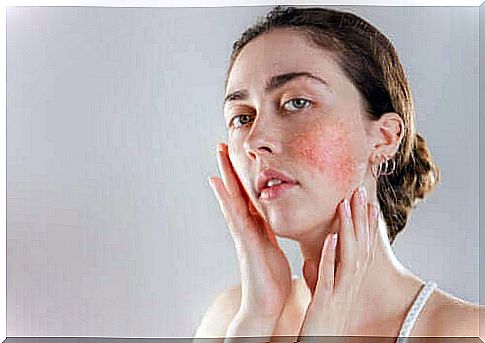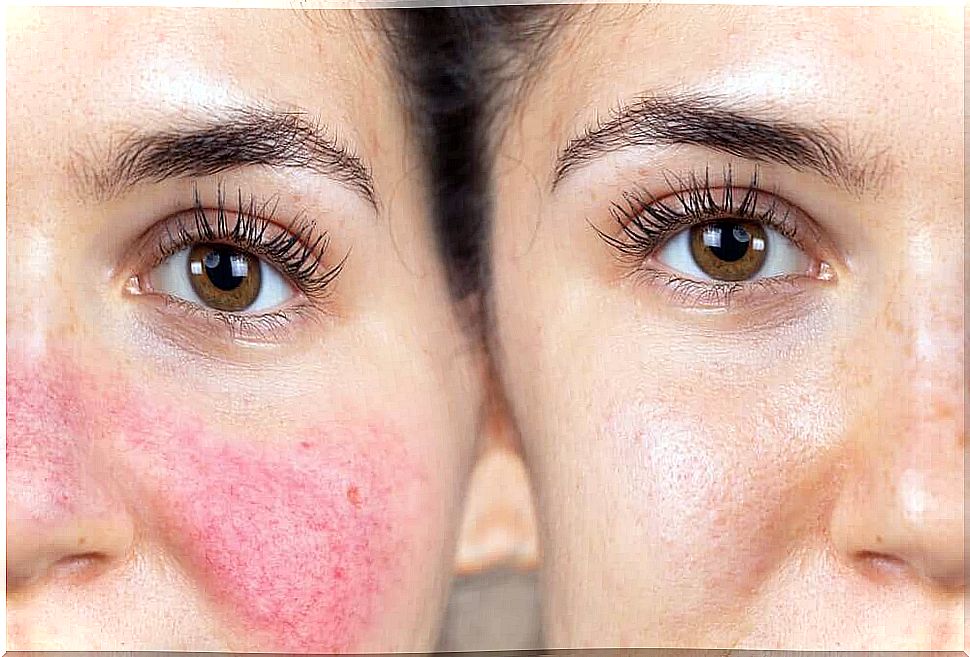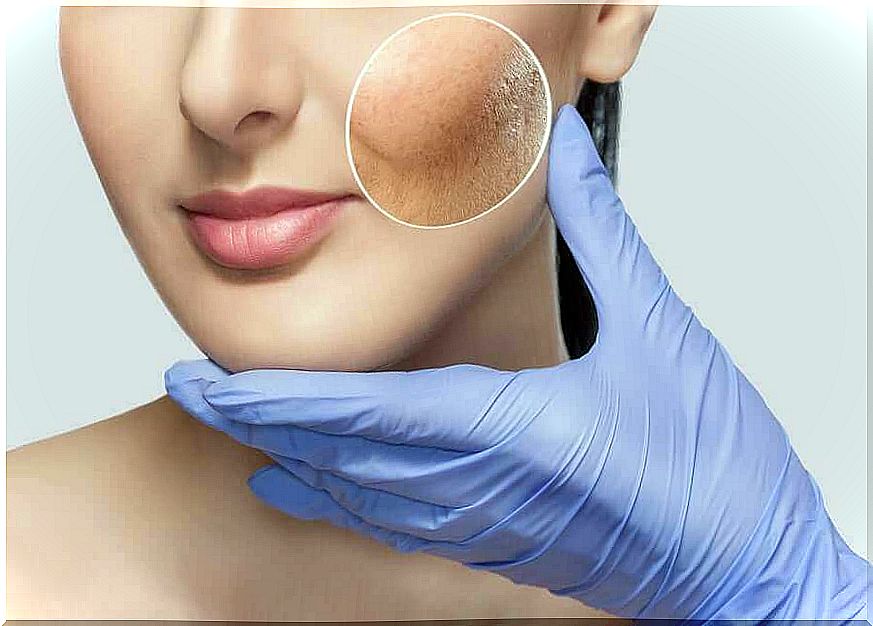Everything You Need To Know About Reactive Skin

Reactive skin is a fairly common problem related to sensitivity to several factors. This condition manifests itself in the form of sudden redness, dryness, shine or irritation. In many cases, the causes are unknown.
This phenomenon is more common in women. In fact, experts estimate that one in three women suffers from reactive skin. Some of them experience symptoms so often that they end up interpreting them as “normal” when they really aren’t. Many dermatologists also find it difficult to classify this type of skin.
Skin reactivity is also commonly referred to as sensitive skin, irritated skin, intolerant skin, etc. But these terms are not precise.
Reactive skin is not a disease in itself, but it does cause discomfort to those who experience it. So what causes reactive skin? And what can people do to control their symptoms?
What is reactive skin?
Until recently, this condition was referred to as ‘sensitive skin’. However, dermatologists believe that the term “reactive skin” is more accurate.
It is defined as a type of skin that causes uncomfortable sensations, including a burning, itching, pain, or stinging sensation, triggering a pathogen that should not cause this type of reaction.
Indeed, skin reactivity only occurs when no other pathology can explain the changes in a person’s skin. In other words, the symptoms cannot be explained by an allergy to a particular substance or the presence of an aggressive agent. like an abrasive soap.
Another feature of this condition is that it generally occurs intermittently. In other words, the symptoms appear and disappear. Often the use of cosmetics is a trigger.

The causes of reactive skin
Science doesn’t quite understand the reasons why reactive skin exists. However, there are three hypotheses that could explain this phenomenon, which we will mention below:
- Epidermic hypothesis. Claims that the skin barrier of the epidermis is defective. Therefore, it does not sufficiently protect the skin against external influences.
- Biochemical hypothesis. This hypothesis indicates that these cases are anomalies and channels known as transient receptor potential channels (TRP) channels. These are located in the most external part of the epidemic cells and in nerve endings.
- Neurogenic hypothesis. This hypothesis indicates that people with reactive skin have a lower number of intraepidermal nerve fibers. At the same time, they show a greater release of inflammatory mediators.
At the same time, experts have determined that there are some agents in particular that cause reactivity in the skin. This list includes the following:
- The wrong use of cosmetics.
- Continuous exposure to certain chemicals.
- Environmental pollution.
- Heat and radiation treatments.
- Extreme temperatures.
- Certain medications.
- Voltage.
- Lack of sleep.
- Low humidity.
- Alcohol.
- Spicy foods or highly spicy foods.

What steps should you take to prevent skin reactivity?
People who have reactive skin should be careful with the products they use. It is best to consult a dermatologist so that the professional can point out which specific products are best for each specific case.
It is important to make certain adjustments to your beauty routine and to optimize the cleansing and hydration of the skin. Using and reapplying sunscreen every two to three hours is also fundamental.
At the same time, it is important to avoid cosmetics that contain potentially irritating ingredients. For example, think of propylene glycol, TCA, AHA, alcohol. Also, people with reactive skin should avoid moisturizing creams containing retinoids and hydroxy acids. In addition, anti-aging products and strong exfoliants can also be irritating.
To cleanse and moisturize reactive skin, it is best to use lotions and creams instead of other products. You should apply these products by dabbing them on the skin, without rubbing.
Reactive Skin: Final Considerations
Treating reactive skin is complex, as is diagnosing it. First of all, a dermatologist must rule out all other possible conditions. He or she can then indicate which products are best for each individual patient. In the same way, the professional must determine which products trigger the most.
Sometimes doctors recommend drugs that are commonly used to treat atopic skin, which have also been shown to be effective on reactive skin.
In any case, it is essential that individuals with this skin condition moisturize their skin. This means not only using moisturizing lotions, but also drinking plenty of water, for example.









